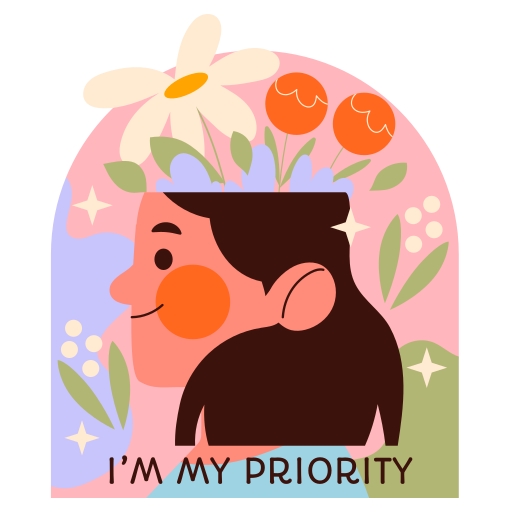Recognizing potential threats is a critical skill in safeguarding oneself from harm. Unforeseen dangers can manifest in subtle yet discernible ways, often overlooked until it is too late. By understanding the warning signs that someone may be planning to harm you, individuals can proactively protect themselves and those around them. From subtle behavioral changes to more overt expressions of aggression, these signs serve as crucial indicators of potential danger. By honing in on these red flags, individuals can navigate potentially risky situations with heightened awareness and take necessary precautions to ensure their safety and well-being.
Unusual Interest in Your Schedule
An individual displaying an unusual interest in your schedule may warrant careful attention and consideration for potential underlying motives or harmful intentions. If someone shows unexplained disappearances coinciding with your activities or seems to be conducting surveillance on your movements, it could signal a concerning pattern. Inquiries about your security measures or precautions taken to protect yourself could also be a red flag, indicating a keen interest beyond normal curiosity. Such behavior may indicate a breach of personal boundaries or a desire to exert control over your life. It is crucial to trust your instincts and take any necessary steps to ensure your safety in such situations, including seeking support from trusted individuals or relevant authorities.
Sudden Increase in Aggressive Behavior
Amidst interpersonal interactions, a sudden surge in aggressive behavior can serve as a critical indicator of potential harm or danger lurking within the dynamics of the relationship. Behavioral changes, especially a noticeable shift towards increased aggression, should not be overlooked. This sudden escalation could signify underlying issues such as poor anger management or unresolved conflicts. Understanding the root cause of this aggression is crucial in addressing the situation effectively. Here is a table highlighting key points to consider:
| Warning Signs | Analysis | Action Steps |
|---|---|---|
| Unprovoked Outbursts | Sudden anger without clear reason | Address calmly, seek help |
| Intimidating Behavior | Threatening gestures or language | Set boundaries, seek support |
| Physical Aggression | Violence or destruction of property | Prioritize safety, consider intervention |
Being vigilant and proactive in addressing these signs can potentially prevent further escalation and ensure your safety.
Attempts to Isolate You From Others

Isolation from social connections can be a concerning indicator of a potential harmful dynamic and should not be disregarded lightly. Understanding social dynamics is crucial in recognizing manipulation tactics aimed at isolating individuals. Here are three key points to consider:
- Control Over Communication: A harmful individual may attempt to control who you interact with, monitor your conversations, or discourage you from spending time with friends and family.
- Creating Dependence: By isolating you from others, the manipulator aims to make you solely reliant on them for emotional support, guidance, and validation.
- Diminishing Self-Worth: Isolation can lead to a decrease in self-esteem and confidence, making it easier for the manipulator to exert control over your thoughts and actions.
Secretive or Suspicious Activities
Engaging in secretive or suspicious activities can signal potential danger and should prompt careful observation and consideration. Monitoring behavior closely in such circumstances is crucial. If you notice someone being unusually secretive, lying about their whereabouts, or hiding information, it may be a red flag. Trusting instincts is key; if something feels off, it's important to take it seriously. Pay attention to any sudden changes in behavior or habits, as these could indicate hidden motives. It's essential to address any concerns you have and seek support if needed. By staying vigilant and trusting your instincts, you can protect yourself from potential harm.
Making Threats or Expressing Violent Fantasies

In assessing potential threats and concerning behavior, recognizing individuals who make explicit threats or articulate violent fantasies is a critical aspect of safeguarding oneself from harm. When someone expresses violent intentions, it is essential to take appropriate steps to ensure personal safety and well-being. Here are three key points to consider:
- Seeking help: Reach out to trusted individuals, mental health professionals, or authorities for guidance and support in dealing with the situation.
- Safety measures: Implement safety protocols such as informing others about the threats, avoiding being alone with the individual, and securing your living and working environments.
- Monitoring the situation: Stay vigilant and document any threatening or concerning behavior to establish a record if needed for future actions.
Frequently Asked Questions
How Can I Differentiate Between Someone Having a Genuine Interest in My Schedule and Someone Showing Unusual Interest in It as a Potential Warning Sign?
When assessing interest levels in your schedule, monitor for subtle cues indicating potential alarm signals like excessive probing or unwarranted persistence. Uphold trust boundaries, observe for consistent behavior patterns, and seek clarity if uncertainty arises.
What Are Some Ways to Address and Respond to a Sudden Increase in Aggressive Behavior From Someone in Your Life?
When faced with a sudden increase in aggressive behavior from someone in your life, utilize conflict resolution and de-escalation techniques to address the situation. Prioritize personal safety by seeking support, setting boundaries, and considering self-defense strategies.
Why Is It Important to Pay Attention to Attempts by Someone to Isolate You From Your Friends and Family, and What Steps Can Be Taken to Prevent Isolation?
Recognizing attempts to isolate from support networks is crucial. Isolation can heighten vulnerability and impact emotional well-being. Foster connections with friends and family, seek professional guidance if needed, and establish boundaries to prevent isolation, prioritizing mental health and safety.
How Can One Distinguish Between Secretive or Suspicious Activities That May Be Harmless Versus Those That Could Be Indicative of Harmful Intentions?
When distinguishing between secretive or suspicious activities, trust instincts to guide perceptions. Seek help for clarity and support, ensuring a balanced perspective. Analyzing behaviors with empathy and insight fosters understanding and proactive responses to potential harm.
What Resources or Support Systems Are Available for Individuals Who Are Dealing With Someone Making Threats or Expressing Violent Fantasies Towards Them?
In times of threats or violent fantasies, individuals can access support groups, hotlines, counseling, and self-defense programs. These resources offer guidance, safety strategies, and emotional support, empowering individuals to protect themselves and seek help effectively.

















